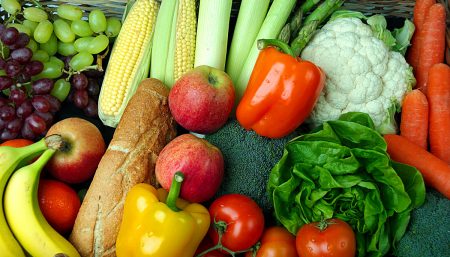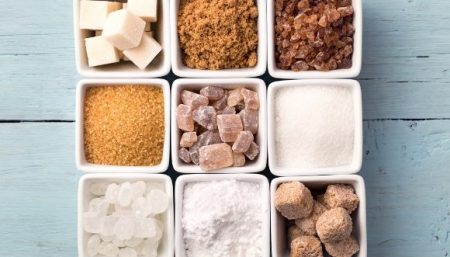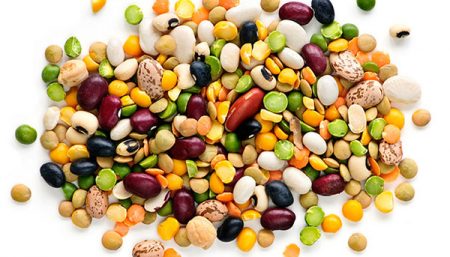
A new study challenges the notion that a “calorie is just a calorie” by finding that diets reducing the surge in blood sugar after a meal are preferable for weight loss, praising the low-glycemic index diet. In order to keep energy expenditure at a high rate, the study researchers suggest a low-glycemic load diet as a more effective way to burn calories at a higher rate after weight loss.
A low-glycemic index diet is made up of minimally processed grains, vegetables, healthy fats, legumes and fruits. It comprises of 40% of daily calories from carbohydrates, 40% from fat, and 20% from protein. Low-glycemic index carbohydrates digest slowly, keeping blood sugar and hormones stable after a meal as compared to low- fat and low-carbohydrate diet.
What is Glycemic Index?
The glycemic index ranks foods on how they affect our blood glucose levels. This index measures how much your blood glucose increases in the two or three hours after eating.
Foods with carbohydrates that break down quickly during digestion and release glucose rapidly into the bloodstream tend to have a high GI; foods with carbohydrates that break down more slowly, releasing glucose more gradually into the bloodstream, tend to have a low GI. It basically about quality of the carbohydrates, rather than the quantity. Thus, a low GI food will cause a small rise, while a high GI food will trigger a dramatic spike in blood glucose level. Foods that are considered low on the glycemic index have a rating of 55 or lower.
The glycemic effect of foods depends on a number of factors such as the type of starch (amylose versus amylopectin), physical entrapment of the starch molecules within the food, fat and protein content of the food and organic acids or their salts in the meal — adding vinegar, for example, will lower the GI.
| Classification | GI range | Examples |
| Low GI | 55 or less | most fruits and vegetables; legumes/pulses; some whole, intact grains; nuts; tagatose; fructose; kidney beans; beets; chickpeas |
| Medium GI | 56–69 | whole wheat products, pita bread, basmati rice, grapes, sucrose, raisins, pumpernickel bread, cranberry juice, regular ice cream |
| High GI | 70 and above | white bread, most white rices, corn flakes, extruded breakfast cereals, glucose, maltose, maltodextrins, white potato, pretzels |
Benefits of Relying on Low Glycemic Diet
- Helps to keep your blood glucose levels under control. This is especially important for people with diabetes. Recent studies of large numbers of people with diabetes show that those who keep their blood sugar under tight control best avoid the complications that this disease can lead to.
- Athletes and sports person people stand to benefit from Low GI Diet as it assists good nutrition and prevent weight gain.
- A Low GI Diet offers a healthy variety without eliminating entire classes of foods – like fat or carbs – so it’s naturally more sustainable.
Increasing Low GI Foods in Diet

- Increase Fiber Intake: Fibrous foods digest more slowly, so your blood glucose levels won’t rise as quickly. Some examples include whole-grain breads and cereals, fruits, vegetables and nuts.
- Include good fats into your diet: Eat fats with your carbohydrates. Fat and protein will lower the glycemic index of the carbohydrates you eat with them.
- Boost Protein Intake: Eat foods that are higher in protein. Foods such as eggs, lean meats and fish are good protein choices. Beans have the added benefit of being good sources of protein and fiber, and they still retain a low GI rating
- Include fresh fruit or vegetables with your meals. Exchange half your bowl of high-GI cereal for fresh berries will lower the glycemic index, as will adding celery, broccoli, onion, spinach or peppers to your meal.
- Add vinegar or lemon juice to foods whenever possible. Including just a couple of teaspoons can lower the glycemic index of the meal 20 to 40 percent.
- Increase intake of Foods in their natural form: Refining processes alter the glycemic index of the food. The more you process or cook a food, the higher the glycemic index becomes. While fruits have a low glycemic index, fruit juice has a high glycemic index. Quick-cooked oats have a higher glycemic index than slow-cooked. Fruits and vegetables tend to have a low glycemic index. This also applies to carrots, which were originally and incorrectly reported as having a high GI.
Include fresh fruit or vegetables with your meals. Exchange half your bowl of high-GI cereal for fresh berries will lower the glycemic index, as will adding celery, broccoli, onion, spinach or peppers to your meal.
Switching from a high glycemic index diet to a low glycemic index diet can be done easily. Switching white bread and pastas to whole grain, eating breakfast cereals from oats, bran or barley, add more fruits and vegetables when cooking and reducing potato consumption can all aid in lowering glycemic index.
Ref:
Related Links
- New Guidelines on Blood Sugar 2012, Released!
- Low Carb Diets: The Best for body builders
- Tips for Preventing Holiday Weight Gain
- Diet containing too much sugar can quickly cause weight gain
- Top 10 high sugar foods to avoid
Disclaimer
The Content is not intended to be a substitute for professional medical advice, diagnosis, or treatment. Always seek the advice of your physician or other qualified health provider with any questions you may have regarding a medical condition.


